Sometimes when you go to a city, you want to see all the “important” sites, but on other trips you want to spend a little more time and discover something new. Since I’ve had the opportunity to visit Rome on a few occasions, I’ve had a chance to some of the off-the-beaten-path places in Rome in addition to all of the highlights like the Colosseum, Vatican, Pantheon, Piazza Navona, the Trevi Fountain, Borghese Gallery, and the Capitoline Museums.
On our recent visit to Rome, we were able to get away from the main sites and enjoyed peeking through the keyhole of the Knights of Malta, getting sweeping views of the city at the Garibaldi overlook, and walking on the ancient cobblestones along Appian Way.
To get some advice on off-the-beaten-path places in Rome that tourists don’t know about, I asked my friends in Rome for their advice and, together, we put together this great list of hidden gems in Rome.
Off the Beaten Path Places in Rome
Note: This post contains affiliate links. If you click on a link and make a purchase, I will receive a small compensation to help pay my blogging expenses.
Here are some suggestions to discover Rome in an unusual, unknown, and mysterious, but still fascinating and marvelous way.
1. Victor Emmanuel II Monument
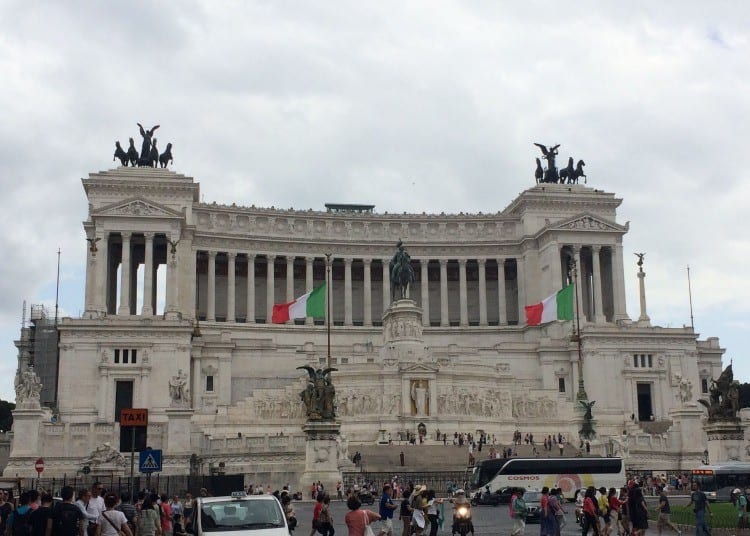
It is hard to call the Victor Emmanuel II monument off-the-beaten-path, as most tourists will walk past it while walking from the Trevi Fountain to the Colosseum through Piazza Venezia. Yet, I’m not sure how many people take the time to climb the steps or take the elevator to the Panoramic Terrace (for a fee.)
The Victor Emmanuel II monument is actually the most reviled attraction in Rome because of its ostentatious size and design. Officially known as the Altar to the Fatherland, it is also called the “typewriter” or “wedding cake.” The monument was inaugurated in 1911 and completed in 1925 to honor the first King of unified Italy. Mussolini gave his speeches from the balcony in Piazza Venezia and designed Fiori de Imperiali to create a sense of a unified Italy.
2. The Knights of Malta Keyhole
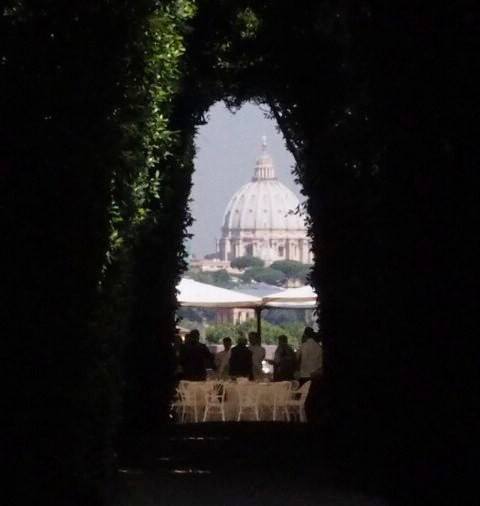
If you head up to Aventine Hill to The Order of the Knights of Malta, you can find a fun surprise and a great photo opportunity. If you peek through the keyhole in the door, you will find the most spectacularly framed view of St. Peter’s dome.
We have visited this spot twice and the first time had to line up for our chance to take a photo through the keyhole. The second time we visited there was an event in full swing and the door was open so we got an even better view than just through the keyhole.
3. Santi Quattro Coronati
There aren’t many churches in Rome that have Romanesque architecture, but you can find one at Santi Quattro Coronati. The church is dedicated to four saints or martyrs. According to one tradition, the saints consecrated there were four Roman Imperial police officers, but according to another tale they were four stonecutters. In both cases, they were martyred. Sometimes the two traditions meld together: the stonecutters refused to cut the marble for a pagan statue and the police officers refused to arrest them.
You will need to enter through a gate, which is overshadowed by a stark tower. Then pass through two internal courtyards that host the Augustinian nunnery. Finally, you will discover the Basilica of the SS Quattro Coronati. It is beautiful, with a nave and two aisles, and a matroneum. The floor is a beautiful Cosmatesque mosaic. There is a quiet cloister closed by a loggia with paired small columns and a little chapel.
If you ask the nuns, they will let you enter the Oratory of San Silvestro, a wonderful place with an extraordinary series of thirteenth-century frescoes on the walls that describe Constantine’s conversion and the story of Pope Sylvester.
You can visit Quattro Coronati, along with the Basilica di San Clemente and the Holy Stairs at St. John on a guided tour.
4. Appian Way
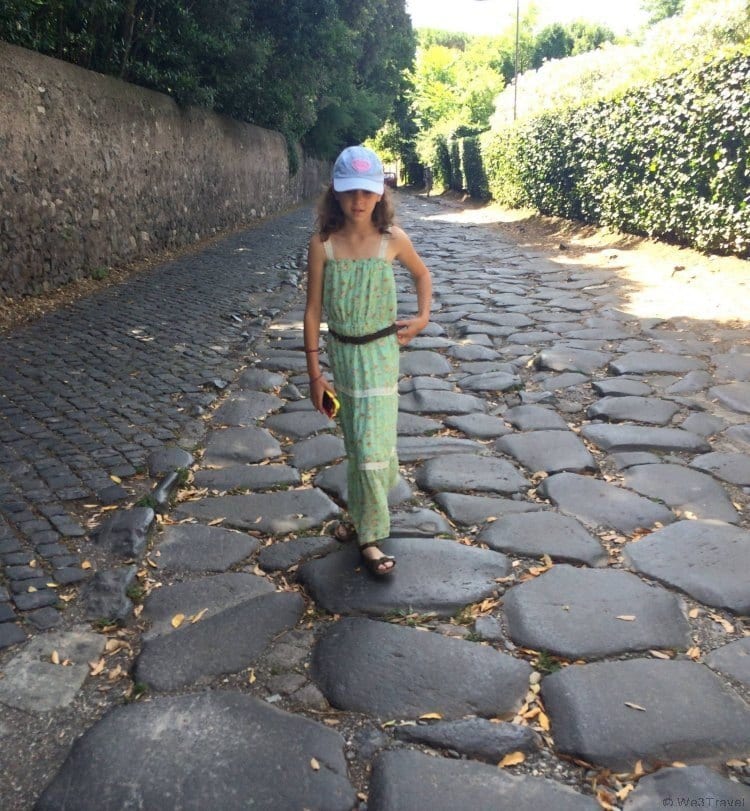
The first paved road of the Roman Empire has been known as the Appian Way since 312 B.C. because it was built by a famous Roman nobleman, Appius Claudius.
Appian Way has been named Regina Viarium (the queen of ways) since ancient times as it was the first great road that branched off from Rome and lead 500 km south across marshland. Along the drive there are many mausoleums and catacombs that you can visit, as the Romans wouldn’t allow people to be buried inside the city.
Since officially cars aren’t supposed to drive on Appia Antica, you need to get out to walk along the ancient cobblestones. Here the road is narrow, just wide enough for two chariots to pass each other, and grooved by ancient chariot wheels.
Walking in the footsteps of Ancient Romans, seeing the worn and grooved cobblestones, and imagining how they used the reflection of the stars on “moonstones” to guide their way at night was like stepping into history. For those of us that have seen the movie Spartacus, it was intriguing to recognize that we were standing where 6,000 enslaved people were once hung to squash slave desertions.
A fun way to explore Appian Way is on an e-bike tour.
5. Aqueduct Park
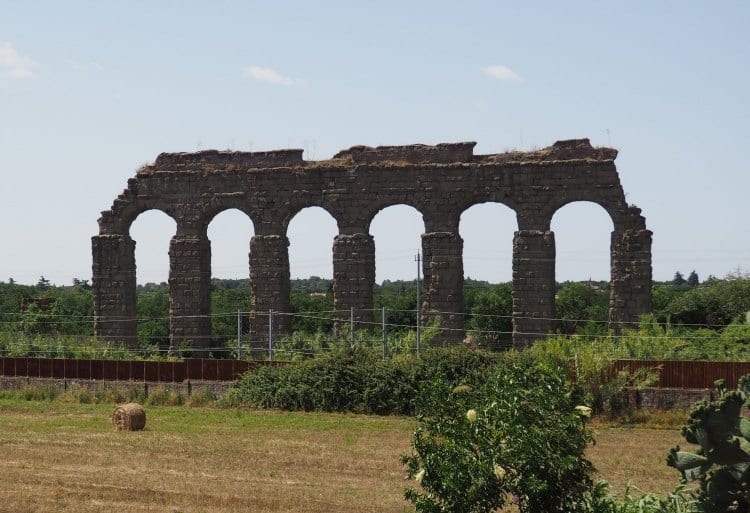
Aqueduct Park showcases the importance that water played in the success of Rome. Without the water the aqueducts carried from 20 km away, Rome would not have been able to thrive. Built in 200 BC, these aqueducts brought water to the first floor of buildings throughout Palatine Hill.
The park is a beautiful place to explore on your own too. With fields of wildflowers framing the ancient structures, it would be an ideal place for a picnic in the park.
You can also visit the Appian Way, Aqueduct Park, and the Jewish Ghetto on a “Rome as a Local” tour with Walks of Italy.
6. Baths of Caracalla
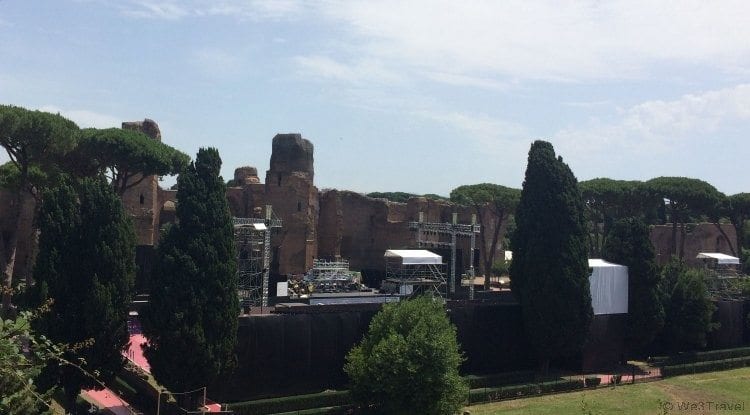
Built around 212 AD, these ancient Baths of Caracalla are huge! Open to everyone in Rome (a reward for paying taxes), the baths were free and serve like an ancient shopping mall with baths, gymnasiums, shops and restaurants.
It is hard to get a handle on the size but imagine taking 2,000 tons of material every day for six years to build these massive baths. Today, it is a backdrop for concerts and opera performances so check the schedule when you are there because it seems like a very dramatic place to see a performance.
7. The Crypt of the Cappuccini
If you are not too sensitive, you can also visit the Crypt of the Cappuccini (or the Capuchin Crypt) in Via Veneto. This “bone chapel” is built entirely from the bones of 4,000 monks who died between the 16th and 19th centuries.
The bones were collected from the mass graves. The crypt is made of several chapels crossed by a corridor that houses the mummified corpses of monks dressed in their habits. It is a macabre path full of decorations made-up of religious men’s bones that are shaped like roses, stars, garlands, and chandeliers.
Visit Crypts, Bones, and Catacombs on an Underground Tour of Rome with Walks of Italy or take a Night Catacombs tour with LivTours
8. More Catacombs
If you really want to be creeped out even further, you can also visit the Catacombs of St. Callixtus or the Domittila Catacombs near Appian Way. These catacombs have several layers that are connected by stairs and you can only visit with a guide. The Catacombs of St. Callixtus are the most important catacombs in Rome and the first official cemetary of the church of Rome.
Over 500,000 people were buried here, including Popes and martyrs. Today the graves have been emptied, so it is ok to visit with kids, although it may not be their first choice.
9. Janiculum Hill – Garibaldi Monument
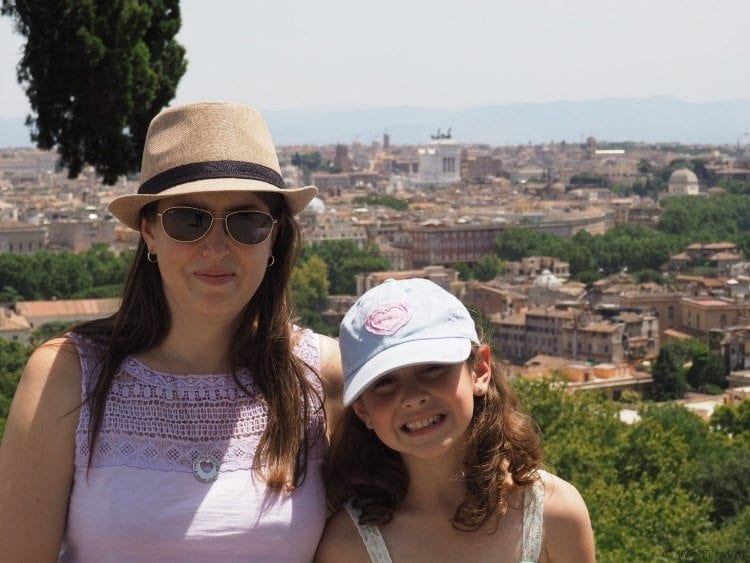
If you have a car and can visit another hill of Rome, head up to Janiculum Hill and stop at the overlook by the Garibaldi Monument. From the Garibaldi Overlook you can see out over all of Rome. Only from this high vantage point can you see how the Victor Emmanuele II monument really towers over the city.
10. Campo dei Fiori

Campo dei Fiori (which means field of flowers) is a large square south of Piazza Navona and not far from the Pantheon. It is home to a flower, fruit and vegetable market in the mornings. It is lovely to walk through the market and feel “like a local”, especially if you are renting an apartment and can pick up some fresh fruit or vegetables to use in your meal preparation.
11. The Sacred Heart of the Suffrage
A Gothic cathedral in Rome is a peculiar thing and you can find one at the Church of the Sacred Heart of the Suffrage in Prati, on the Lungotevere Prati. It was built between the end of the nineteenth and the beginning of the twentieth century.
The peculiarity of this little Gothic treasure, completely admirable also by the other side of the Tiber, is not just the fact that it is a wonderful miniature of the Milan Cathedral, but that it hosts one of the most unique museums of the Capital.
It gathers together proof of a deceased soul’s existence. Books, fabrics, and images, on which prints of Purgatory souls are impressed, have been collected since father Victor Jouet, the founder of this church, discovered the effigy of a suffering face on a fire spot. Jouet thought this was the sign of a Purgatory soul who was trying to get through, so he decided, on Pope Pius X’ s approval, to collect relics of the other world and to expose them publicly, as proof of the existence of life after death. Today, the little museum displays books and any kind of objects, each of them with its own amazing story.
12. Saint Mary above Minerva
The church of Saint Mary above Minerva is a rare sample of the Gothic style in a city dominated by Baroque architecture. It is full of beautiful works of art inside and for this reason, it is definitely worth a visit. The second part of the basilica’s name is fake. The ruins on which the church was built did not belong to Minerva Calcidica as it was thought for a long time.
Starting from 1280 the church has been rebuilt and reshaped many times. In the seventeenth century, Carlo Maderno changed the original facade from where three gates open today: the middle one is considered to be a work by Caprino. In the 7th right-hand chapel, there are the Sepulchre of the bishops Giovanni de Coca and Benedetto Soranzo, works of the fifteenth century.
The most important work of art in this place of worship is the marvelous Christ Carrying the Cross by Michelangelo, an extremely elegant sculpture. Santa Cateriena da Siena and the great Dominican painter Beato Angelico are also buried in the church.
13. The Chapel of Sancta Sanctorum
The building that encloses the next treasure stands at the Archbasilica of St. John Lateran and it preserves the precious chapel of the Popes, called Sancta Sanctorum. Here the image of the blessed Saviour is venerated.
The well-known Holy Stairs owes its name to the 28 steps that lead to the chapel. They are meant to be climbed on bended knees to venerate the Passion of Christ. According to an ancient Christian tradition, in 326 A.D. the Empress Saint Helena made the Stair carried from Jerusalem. The stair was climbed by Jesus many times on the day of his sentence of death.
But the chapel of Sancta Sanctorum has a story that will interest you. It is a splendid chapel in front of which pilgrims, once reaching the last step of the Holy Stair, can pray through the massive gate that protects it. According to Medieval historians, it used to be the most venerated sanctuary of Rome. It was the private oratory of the Popes up to Renaissance and it remains a witness of a magnificent millennium of Roman papacy history.
14. Borghese Gardens
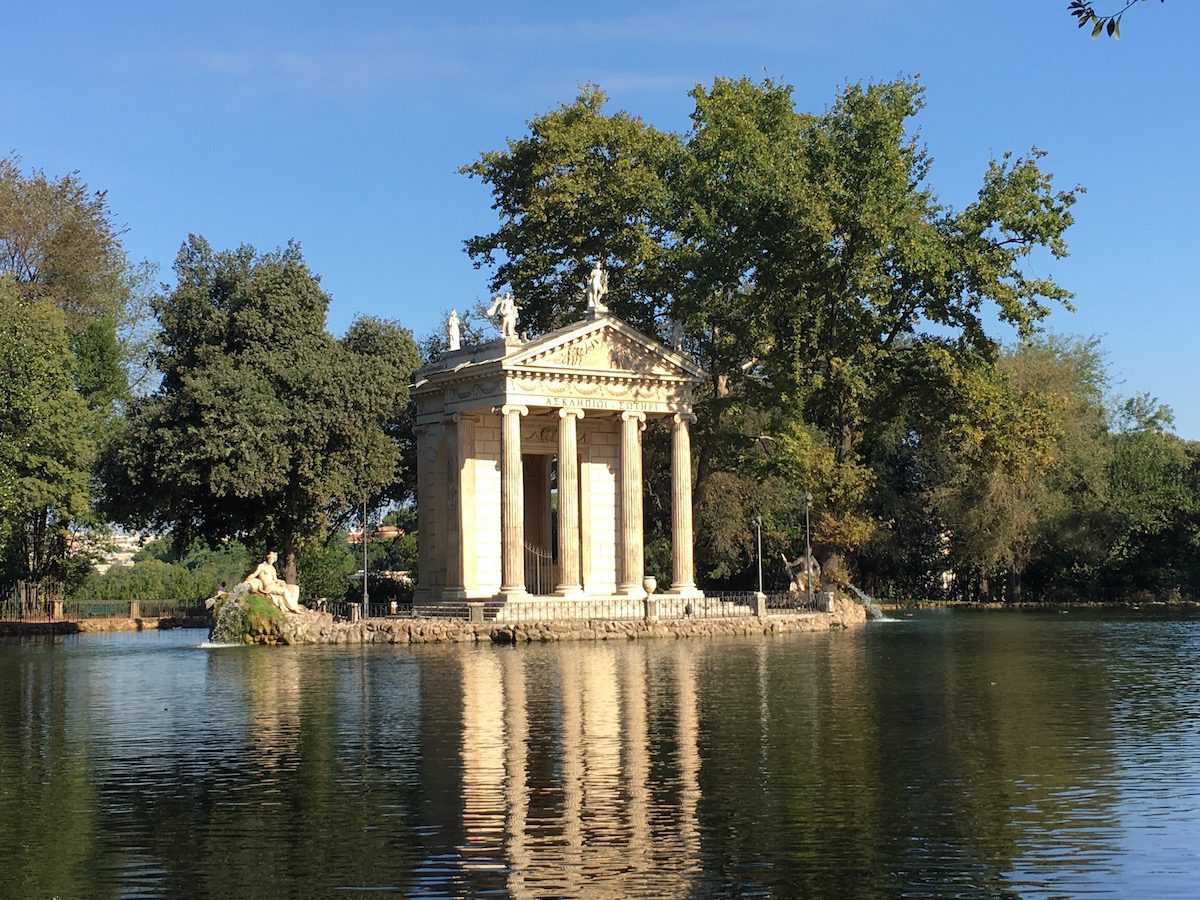
Villa Borghese is a beautifully landscaped garden not far from the Spanish Steps and the third largest public park in Rome. Many art lovers visit the Borghese Gallery to see paintings by artists such as Caravaggio, Canova, and Raphael. However, not as many wander through the Villa Borghese gardens, where you can rent bikes, row boats, or enjoy the walking or running paths. It is a nice way to escape the city heat in the summer.
15. The Casina delle Civette
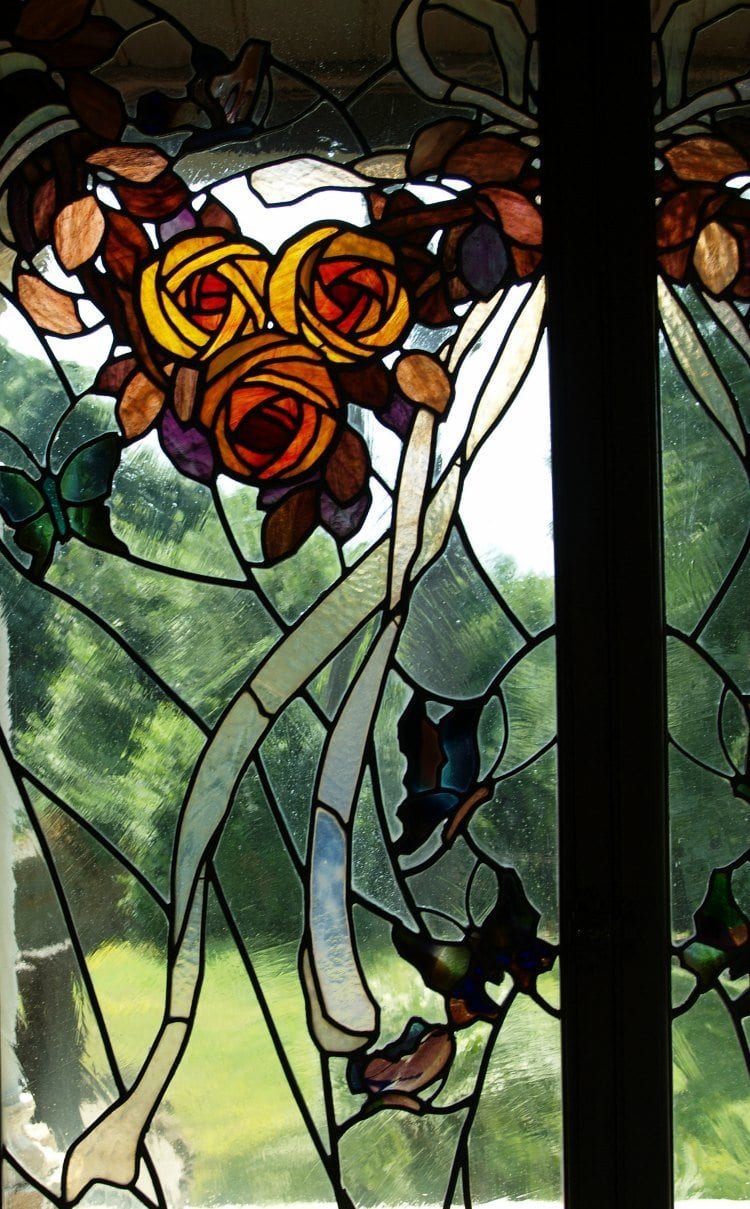
Once you have reached your fill of churches, there are still more hidden gems in Rome to explore. The Casina delle Civette is a small home on the grounds of Villa Torlonia that contains an incomparable sample of Art Deco pieces. Between 1910 and 1925, in the middle of the Art Deco period, a group of artists, such as Duilio Cambellotti, Paolo Paschetto, Umberto Botazzi, and Vittorio Grassi, reshaped the ancient chalet or Capanna Svizzera inside Villa Torlonia into the current Museum of the Art Deco glass wall (Museo della Vetrata Liberty).
The artists, thanks to trials and several techniques, left space to their imagination covering the casina with countless doors and windows made with lead polychrome glass portraying birds, butterflies, but most of all owls (civette) and other nocturnal animals. Hence its name and magic look!
Surrounded by the green of Villa Torlonia, the Casina delle Civette seems like coming out of a fairy book due to its peculiar architecture. The former house of Prince Giovanni Torlonia is nowadays a unique Museum for its style. The house and the park architecture tell the story of the noble family who lived here more than 100 years.
16. Via Margutta
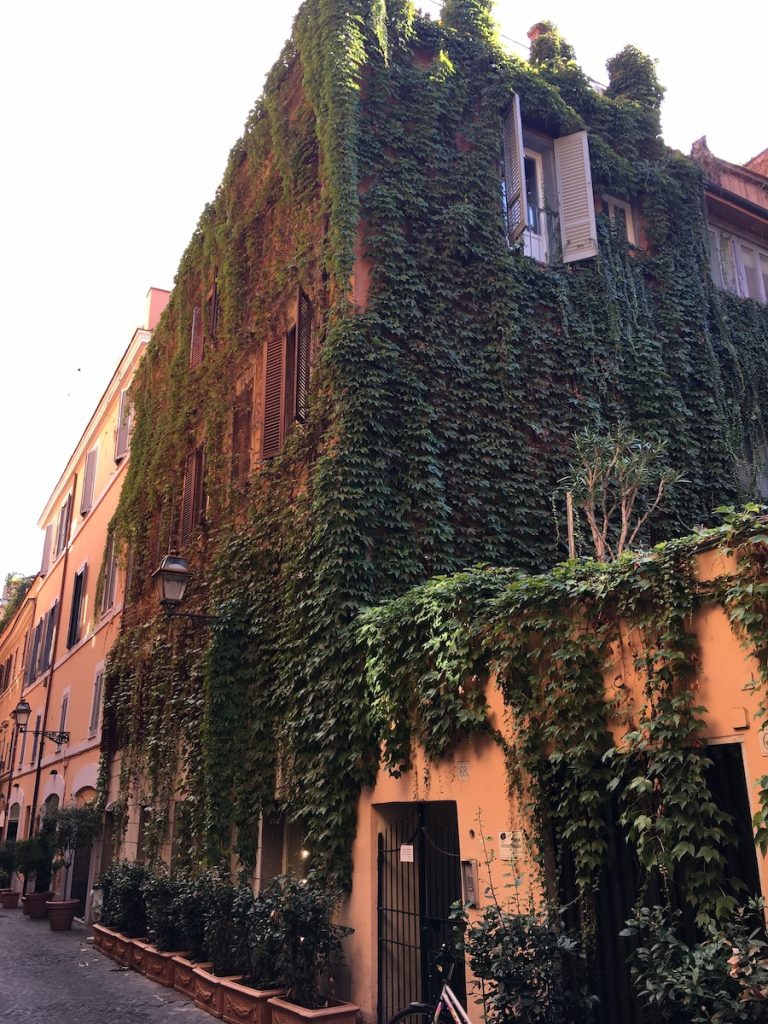
One of my favorite streets near the Spanish Steps is the charming Via Margutta. With fountains, cute cafes, and buildings dripping in ivy, it is such a nice respite from the busy area at the Spanish Steps and the shopping street of Via Del Corso.
17. Ostia Antica
If you have time for a day trip, Ostia Antica is a good choice without needing to go all the way out to Pompeii. A guided tour of Ostia Antica leads to a stretch of ruins, romantically surrounded by the green landscape. It has basically remained uncontaminated by human interventions except for simple excavation and restoration, since late ancient times.
For this reason, Ostia represents an extraordinary place to visit if you want to know about Ancient Rome’s social life, habits, buildings, and professions. Nearer than Pompeii, better preserved, easily accessible, and made in Rome’s own image. You can walk through the ancient Roman harbor along the decumanus maximus which is the continuation of Via Ostiense from the Roman Gate (the Porta Romana) to the Porta Marina.
Through this long road paved with large stones, and exploring the side and parallel streets, you reach buildings of different historical phases. They were intended for different purposes and used to characterize the public and private life of a Roman community.
The theatre, Teatro Augusteo, is still used for summer theatrical performances, behind which there is the Piazzale dellle Corporazioni. It is a big colonnaded square with a central temple, probably dedicated to Ceres, the Roman goddess of abundance and prosperity.
18. Trastevere
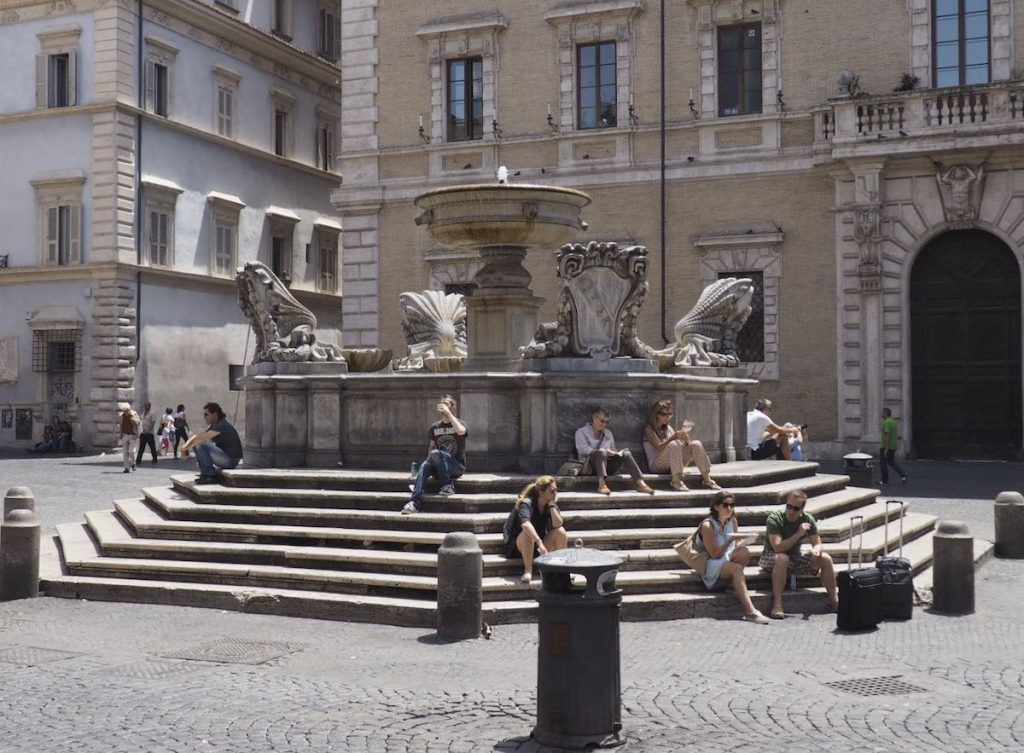
Trastevere is one of the most beautiful neighborhoods in Rome. Located just across the Tiber River, it is where to go to feel like a local. The main square is Piazza di Santa Maria, but I would encourage you to explore all the charming side streets in the surrounding area.
A perfect way to explore this area is through a Trastevere food tour with Eating Europe. Or, squeeze it into your itinerary with a Trastevere by Night tour with Walks of Italy.
19. Testaccio and The Pyramid of Cestius
Testaccio is another neighborhood across the Tiber that is even less visited by tourists than Trastevere. We were able to explore this neighborhood as guests of family friends that live here. This area is so layered with history that their house as an archeological museum in the basement filled with artifacts and ancient Roman streets that they found under their house. Pretty amazing!
Restaurants in Testaccio are known for serving offal with dishes like tripe. You can explore this neighborhood more on a Testaccio food tour with Devour Food Tours. One of the most famous sights in Testaccio is the Pyramid of Cestius. It was built over 2,000 years ago as a mausoleum to priest Gaius Cestius.
20. The Roman Castles
Don’t let the name deceive you. These are not like the ancient Scottish castles on the top of the foggy highlands. The Roman Castles are 13 well-known towns located on the Halban Hills. Used as holiday resorts for noblemen since the Empire times, they are still one of the most favored destinations of Roman people on scorching summer days.
Definitely do not miss Frascati, dominated by the sixteenth-century Villa Aldobrandini, with its Italian-style gardens. The splendid facade stands out against the whole town. If you prefer a more Medieval style, we recommend the Greek Abbey of San Nilo, near Grottaferrata. The abbey was founded in 1004 by monks who were coming from Byzantine Calabria.
But the Roman Castles are also famous for the towns that stand on volcanic lakes, like Castel Gandolfo (the summer residency of the Pope) which overlooks Lake Albano. When warm enough, it is worth a nice spot for swimming and relaxing in one of the many cafés that surround the lake.
Also don’t miss the cozy Nemi for its appealing green and blue landscape, but also for a taste of Roman history. This town overlooks the namesake lake, along which the Museo delle Navi Romane is located. It was built by Mussolini to house two ancient Roman ships found when the lake was partially drained, between 1927 and 1932.
21. The National Gallery of Modern Art
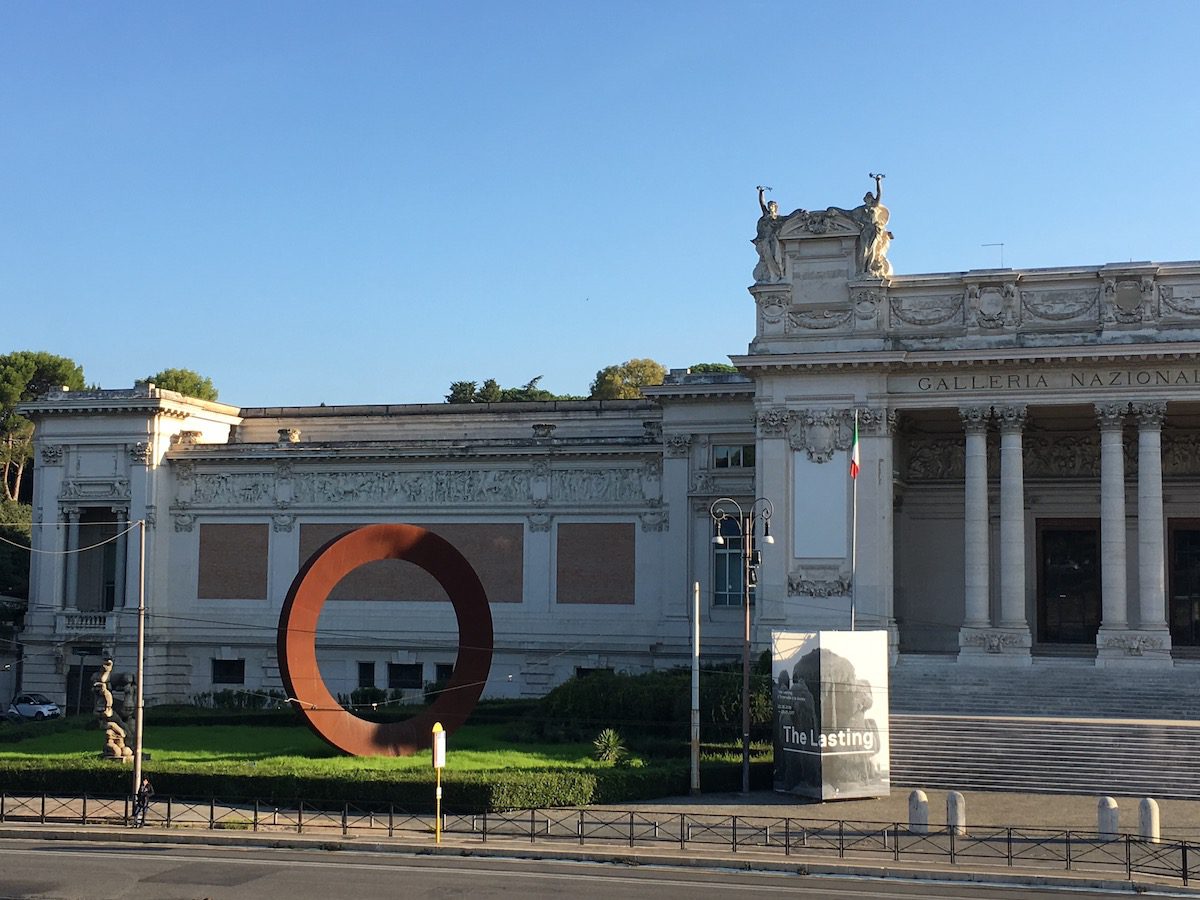
The National Gallery of Modern and Contemporary Art (GNAM) is the biggest collection of Italian contemporary art. Placed in Rome, nearby Villa Borghese and the Bioparco, it houses more than 4,400 paintings and sculptures and roughly 13,000 drawings and artists’ prints – mainly Italian – from the nineteenth and twentieth century.
In its 55 halls, you can admire the collection of masterpieces of about 1,100 works. It is the only national museum entirely dedicated to modern art. One hall is completely dedicated to avant-garde art including Braque, Matisse, and Mondrian works. Every 6 months, the Gallery displays really interesting, public exhibitions from Japanese art to the pre-Raphaelites, to Calder.
BOnus:
One more place I can’t wait to visit on a return visit with my cat-loving family is the Largo de Torre Argentina cat sanctuary.
Where to Stay in Rome
VIsiting Rome? Read More
- Best things to do in Rome with kids
- Best Rome hotels with a pool
- Movies set in Rome
- Rome apps to download for your trip
- Avoid looking like a tourist in Rome, Italy
- What does a trip to Italy cost?
PIN THIS FOR LATER
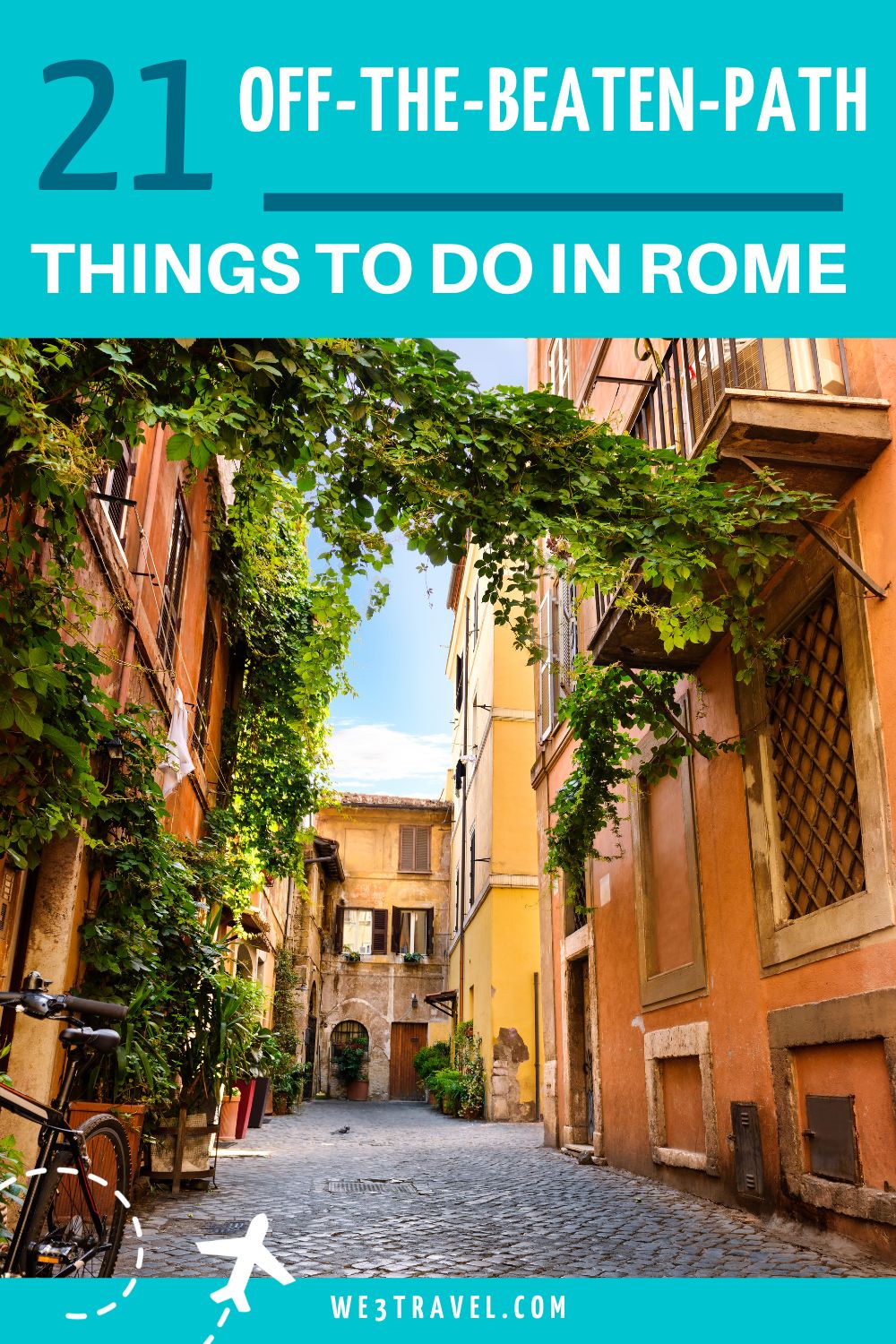

Tamara Gruber is the Founder and Publisher of We3Travel. A former marketing executive and travel advisor, Tamara is an award-winning travel writer and recognized expert in family travel. Tamara is a member of SATW and the Adventure Travel Trade Association, and serves on the Board of the Family Travel Association. She is also the publisher of YourTimetoFly.com and the co-host of the Vacation Mavens travel podcast.


